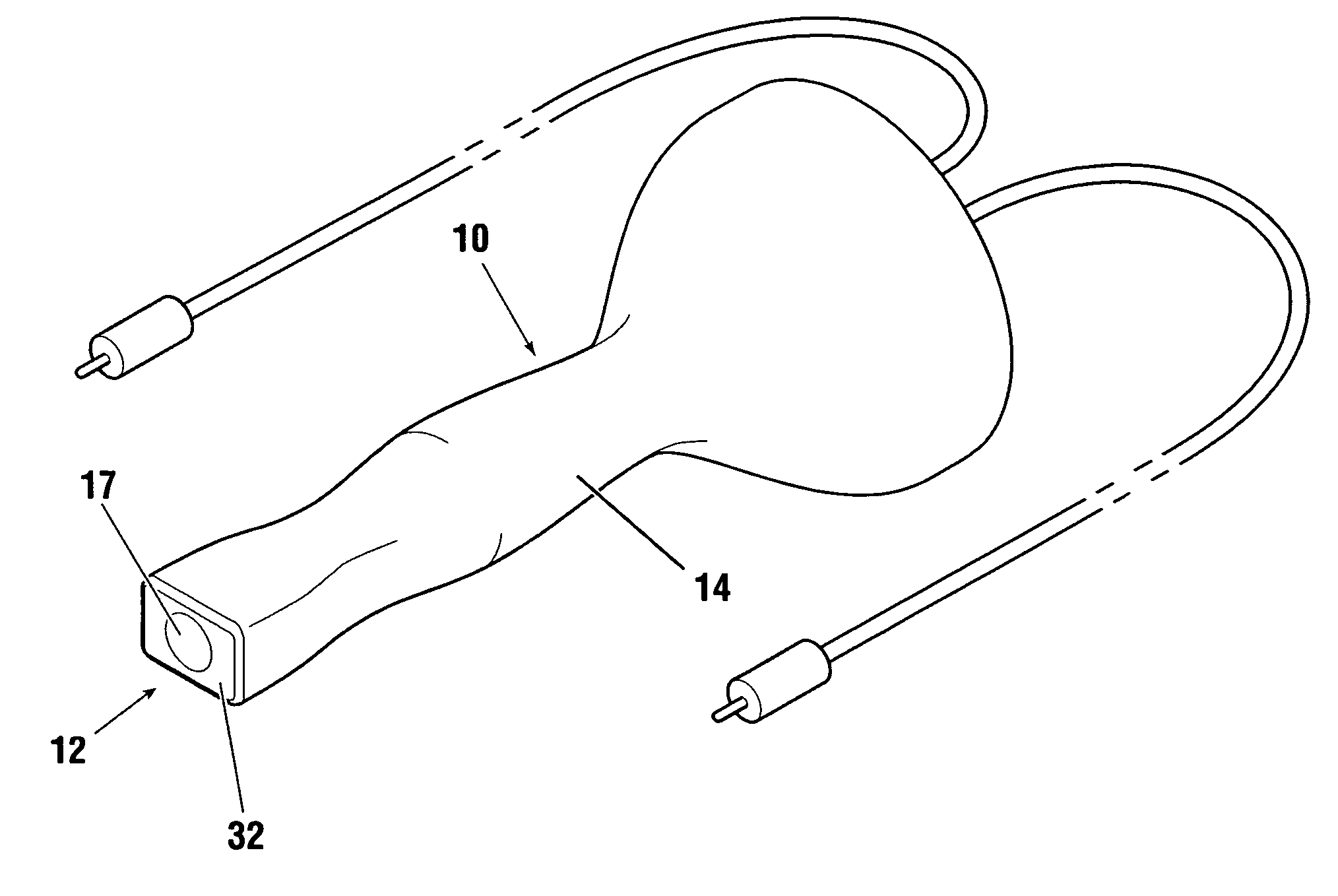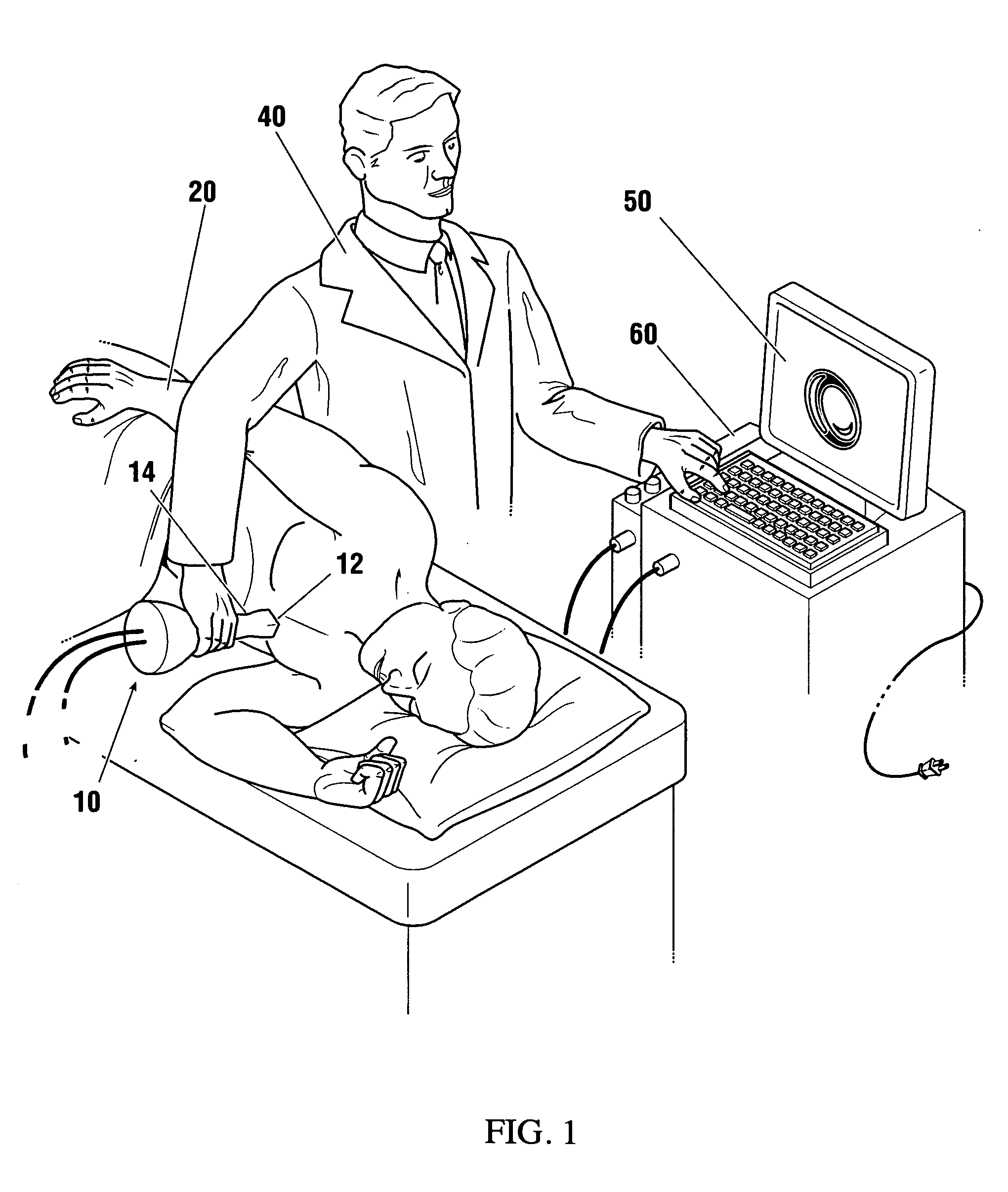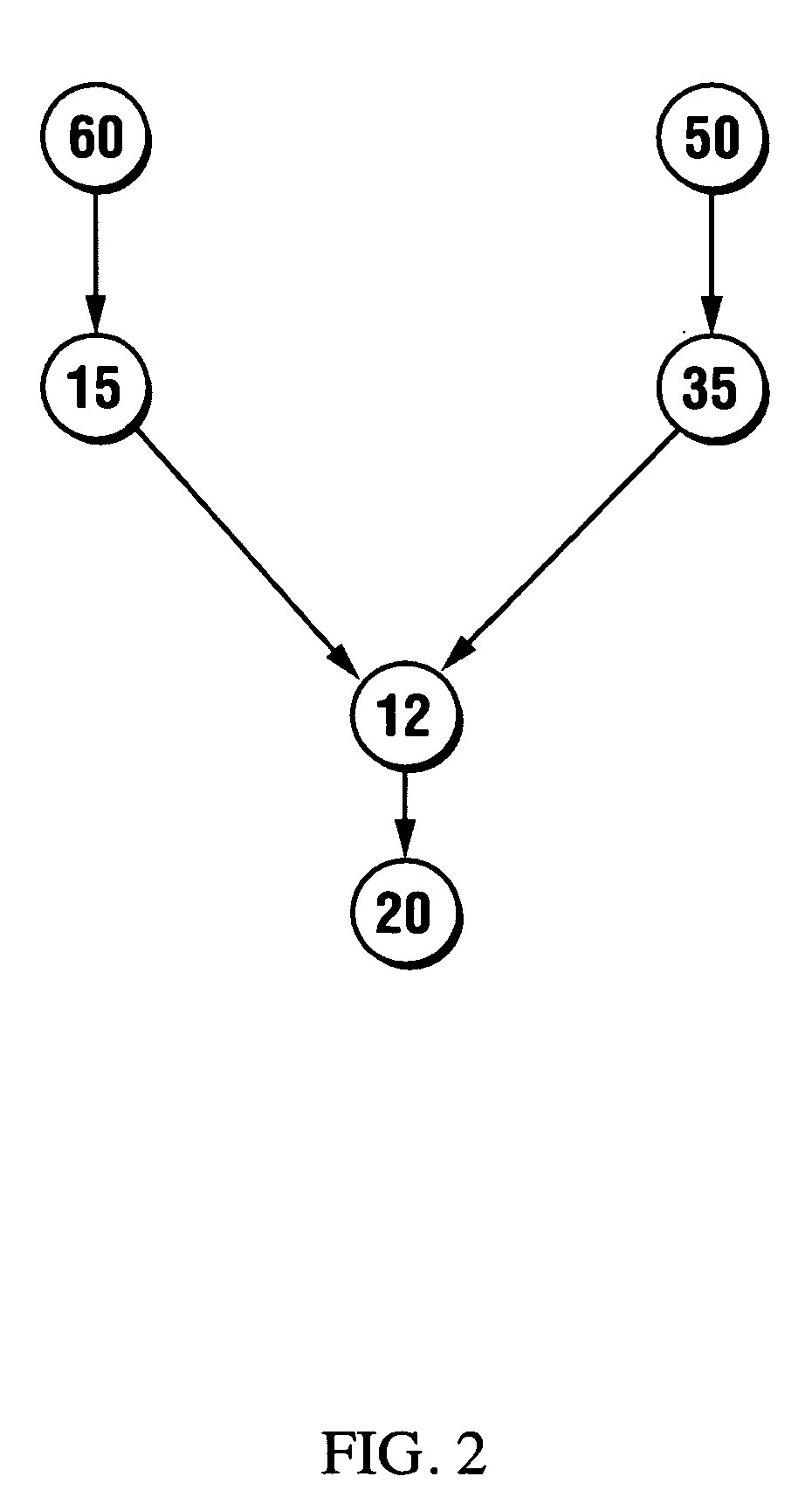Hand-held imaging probe for treatment of states of low blood perfusion
a handheld imaging and state-of-low blood perfusion technology, applied in the field of non-invasive handheld imaging instruments, can solve the problems of low success rate of thrombolytic drug treatment, marked decline in in-hospital survival, burning of overlying skin and soft tissue, etc., and achieves advantageous sized and shaped, high energy acoustic energy, and substantially rigidity.
- Summary
- Abstract
- Description
- Claims
- Application Information
AI Technical Summary
Benefits of technology
Problems solved by technology
Method used
Image
Examples
Embodiment Construction
[0036] A non-invasive hand-held treatment imaging probe 10 for treating emergency blood flow disturbances and states of low blood perfusion to body regions by imparting therapeutic high sonic to low ultrasonic frequency acoustic energy is described. Treatment imaging probe 10 comprises an ultrasonic imaging transducer 35 operatively attached to a therapeutic actuator 15. The therapeutic actuator 15 is operable in about the 1-500 kHz, and preferably 1-150 kHz, and most preferably 15-30 kHz, frequency range. As stated previously, therapeutic acoustic energy in the high sonic to low ultrasonic frequency ranges is known for its deep penetration characteristics, and superior clot disruptive and thrombolytic enhancement capabilities. Treatment imaging probe 10 has a substantially rigid application surface 12 which is generally sized and shaped to enable seating within a rib space of a patient 20. Application surface 12 advantageously includes an engagement face 32 of ultrasonic imaging tr...
PUM
 Login to View More
Login to View More Abstract
Description
Claims
Application Information
 Login to View More
Login to View More - R&D
- Intellectual Property
- Life Sciences
- Materials
- Tech Scout
- Unparalleled Data Quality
- Higher Quality Content
- 60% Fewer Hallucinations
Browse by: Latest US Patents, China's latest patents, Technical Efficacy Thesaurus, Application Domain, Technology Topic, Popular Technical Reports.
© 2025 PatSnap. All rights reserved.Legal|Privacy policy|Modern Slavery Act Transparency Statement|Sitemap|About US| Contact US: help@patsnap.com



